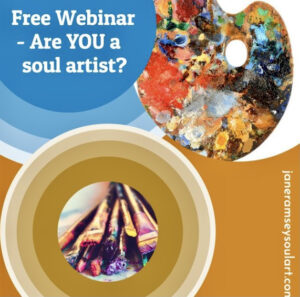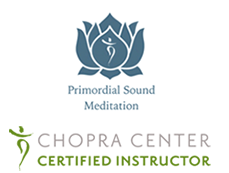The Journey to Happiness
I wrote a book titled Vision Quest; a Journey to Happiness. After retiring from corporate life, I became a student. I kept a detailed journal and recapped the most insightful things I learned. After that, my journal became a book. One of the most profound things I learned on my vision quest was that we can all take a journey to greater happiness.
On my vision quest, I took an amazing class about achieving greater well-being. The Science of Happiness at UC Berkeley is an online course sponsored by the Greater Good Science Center. It explores the roots of a happy, meaningful life.
course sponsored by the Greater Good Science Center. It explores the roots of a happy, meaningful life.
This Science of Happiness Class made a huge positive difference in my life and it spurred me toward other discoveries that have made a measurable difference in my own happiness level.
What is Happiness?
One of the first lectures explained how scientists define and measure happiness. Professor Dacher Keltner said that being “happy” could refer to many things. Some define happiness as a sense that life is going well. Similarly, some reference a fleeting emotion, a trait we possess, or even a sensation.
Happiness scholars often focus on the first two aspects: life satisfaction and positive affect. Because these combine to form something known as “subjective well-being.”
Before the late seventeenth century, happiness was considered to be the result of luck or divine favor.
 In the seventeenth and eighteenth centuries, new thinking developed about happiness. Most importantly, happiness was then declared to be a human right. Of course, we all now recognize that “Life, Liberty, and the Pursuit of Happiness” is contained in the United States Declaration of Independence.
In the seventeenth and eighteenth centuries, new thinking developed about happiness. Most importantly, happiness was then declared to be a human right. Of course, we all now recognize that “Life, Liberty, and the Pursuit of Happiness” is contained in the United States Declaration of Independence.
You can increase your happiness.
Scientists have discovered that people have a genetic set-point, which accounts for about 50 percent of our happiness. In other words, this means that some part of your personal level of happiness is determined by your genetics.
However, only 10 percent of your happiness level is dictated by your life circumstances.
I found that shocking. Not only that a very small part of your happiness is dictated by your circumstances, but also, that you can change your happiness level. A whopping 40 percent of your happiness level can be changed by intentional activity. That was a profound realization for me. Through the development of relationships, philanthropy, optimism, savoring, mindfulness, physical activity, spirituality, and goal pursuit you can improve your level of happiness.
So why doesn’t everybody intentionally increase their own happiness?
Because you are a human being, you – like everyone; have had your share of anxiety, stress, and sadness in life. Similarly, we can feel stuck in those negative types of feelings and emotions. However, I learned that we can all increase our happiness quotient. By consciously cultivating specific practices, we can become happier. Two of the most powerful happiness catalysts are cultivating gratitude and positive emotions.
Barbara Fredrickson’s research says that increasing the ratio of positive to negative interactions in your life can impact happiness.
 To become more positive, she suggests being open, appreciative, kind, curious, authentic, and sincere. She also recommends keeping track of your positive and negative emotions to monitor your ratio.
To become more positive, she suggests being open, appreciative, kind, curious, authentic, and sincere. She also recommends keeping track of your positive and negative emotions to monitor your ratio.
One action you can take is to spend ten minutes journaling three good things that happened today. This teaches you to seek out and savor positive things. In the same way, it has been shown to increase happiness six months later. Similarly, taking a ‘gratitude census’ of what is good in your life is one of the most uplifting things you can do.
As the Founder of SoulArt Meditation, I use gratitude experiences in my courses.
Not only can gratitude exercises create greater happiness, but they can also lead you to even more creativity. I often imagine an immense scroll, curling in on itself, filled with lines and lines of things I have experienced in life that give me a feeling of gratitude.
This is always an antidote for me of overcoming feelings of loss and pain. It is transformational and it can always lift my mood.
You can do this in an art journal. Just begin to make a list. Take an inventory of life’s assets.
You can list the names of people you love; people who love and care for you. These can include animal companions in your life. 
It might include being thankful for your health, your home, your garden, your refrigerator of food, your peaceful life. Your list might include your profession and how you are able to serve others.
You may list friends and those who have helped you through life’s challenges. Include those who share hobbies and neighbors. You might include mentors who encourage you to live your best life and acquaintances with whom you feel a special bond.
When I begin my list, it’s like a chain reaction. I begin to notice even more simple things that I am grateful for.
I write down things like fresh herbs. The hummingbirds I saw this morning. Singing along to one of my favorite songs on the radio. Getting a text or an email from a friend.
Maybe you are thankful for small thoughtful things you have been able to do for someone else. Or hearing that someone you have mentored is doing well and making their mark in the world.
In the SoulArt series of courses, you learn the impact of making gratitude part of your day-to-day life. Gratitude is a catalyst for positivity, daily joy, and generosity coming from and to you.
When you make your gratitude visible, that helps you affirm what is good in your life. You are bringing to consciousness what nourishes and supports you.
I learned about the role of “hedonic happiness” in the Science of Happiness class.
Hedonic happiness means that we can get used to a higher quality of life and stop savoring it and appreciating it. Professor Emiliana Simon-Thomas further explains: hedonic adaptation is a real phenomenon. In like manner, we fail to predict how quickly we’ll adapt to positive and negative circumstances.
We are poor judges of what will make us happy or unhappy in the future. In other words, our “affective forecasting” is off.
We fear breakups, though research shows that we bounce back. You might believe that having greater wealth will lead you to be happier. Yet (after a certain amount) research shows that having more wealth doesn’t give us a boost. We buy things when material purchases actually can decrease our satisfaction.
Another expert is Sonja Lyubomirsky. She explains that hedonic adaptation makes sense from an evolutionary perspective because our ancestors had to be alert to danger.
When circumstances are constant, we pay less attention. In the case of negative experiences, it’s a blessing.
Except for a few horrible circumstances, we tend to bounce back from everything. From divorce to cancer, humans tend to find internal resilience.
Besides the obvious impact of greater life satisfaction, there are other benefits to cultivating happiness.
 Happy people make more money, cope better, and are better leaders and negotiators. Happy people are more likely to get married, have fulfilling marriages, and have more social support. They are more creative, productive, philanthropic, caring, resilient, and healthier. All of this research was recounted by Dacher Keltner.
Happy people make more money, cope better, and are better leaders and negotiators. Happy people are more likely to get married, have fulfilling marriages, and have more social support. They are more creative, productive, philanthropic, caring, resilient, and healthier. All of this research was recounted by Dacher Keltner.
Happiness is also associated with greater longevity and health.
Happy people have better social relationships: they have more friends, are judged to be warmer, more intelligent, and less selfish, and are more likely to get assistance and trust. Happy people who get married are less likely to get divorced and feel more love and fulfillment.
Happiness can boost your creativity and innovation. Not only for you but also for those around you.
Happy people are more sociable, energetic, charitable, and cooperative. They think more flexibly and with more ingenuity. Happy college freshmen have higher salaries sixteen years later; happy female students are more likely to be married at age twenty-seven and satisfied in marriage at age fifty-two.

Barbara Fredrickson says that positive emotions open our hearts, minds, and perspectives to think more broadly and see global differences and similarities.
People experiencing positive emotions actually expand their field of vision, can see more possibilities, and be more creative. Doctors experiencing positive emotions make better medical decisions.
Positive emotions may even affect us on a biological level, at the level of cell renewal.
I was fascinated to learn from Professor Keltner that money makes us happier—but only up to a certain point. People in poor countries become happier when they have more money, but we don’t see much change in happiness as people start earning more than enough to sustain a family.
These days, wealth but not happiness is increasing in the United States, and 37 percent of the wealthiest Americans are less happy than the average American.
In another segment of the class, I learned that the vagus nerve (that starts at the top of our spinal cord and runs downward through the neck muscles) impacts our happiness.
The vagus nerve has connections to many key physical functions, including oxytocin networks and immune and inflammation responses.
Activity in the vagus nerve is related to feelings of connection and care, so it activates in response to emotions. If you have lots of vagal activity, you show more positive emotion, stronger relationships, more social support, and more altruism.
activity, you show more positive emotion, stronger relationships, more social support, and more altruism.
I also learned about oxytocin, “the love hormone.” Dacher Keltner explains that oxytocin is a neuropeptide, a sequence of amino acids that affects the brain and organs. It is increased by touch, and people with a particular gene on their third chromosome produce more oxytocin.
A whiff of oxytocin generates more trust, generosity, empathy, and the ability to read emotions. Giving a father oxytocin will cause his baby to show increased oxytocin.
Giving oxytocin to nonhuman species increases monogamy and caregiving.
In general, more oxytocin correlates with a reduced stress response in our hormones, cardiovascular system, and amygdala and correlates with secure attachment and peaceful conflict resolution in romantic relationships.
Forgiveness is another way to increase your happiness quotient.
 The science of forgiveness stems from the insight that the hurts and conflicts we suffer in life take a toll on our psychological and physical well-being. In response to these hurts, holding onto grudges and dwelling on them—what psychologists call “rumination”—undermines our happiness.
The science of forgiveness stems from the insight that the hurts and conflicts we suffer in life take a toll on our psychological and physical well-being. In response to these hurts, holding onto grudges and dwelling on them—what psychologists call “rumination”—undermines our happiness.
Study after study has suggested that forgiveness reduces stress and fosters happiness. For instance, a study by researchers at the University of Miami links forgiveness to increased satisfaction with life, more positive emotions, less negative emotions, and fewer symptoms of physical illness.
The same group of researchers also found that forgiving on one day is linked to higher happiness on the next day.
Shauna Shapiro shows how mindfulness meditation can impact our brain function and lead to greater positivity.
 Our attitude and behaviors have a bigger effect on our happiness than our external circumstances. Mindfulness shapes your brain by increasing gray matter in areas related to attention, learning, self-awareness, self-regulation, empathy, and compassion. Meditation can have a lasting impact on your brain and thus your happiness.
Our attitude and behaviors have a bigger effect on our happiness than our external circumstances. Mindfulness shapes your brain by increasing gray matter in areas related to attention, learning, self-awareness, self-regulation, empathy, and compassion. Meditation can have a lasting impact on your brain and thus your happiness.
Doing random acts of kindness is another way to increase positivity and happiness in life.
The Science of Happiness class taught me that happiness is linked to contributing to the greater good.
If you would like to learn how to increase happiness and decrease stress, I recommend taking the Science of Happiness course. SoulArt Meditation also builds on this foundation, helping Soul Artists find greater meaning, purpose, joy, and self-expression in life.
Find out more about my journey through my book on Amazon: Vision Quest; A Journey to Happiness by Jane Ramsey.
Enroll in my Free Webinar to learn if SoulArt Meditation is right for you.
Read how Creativity is like Meditation here.
Learn the Benefits of Pranayama.
To learn more about Chakras read the Blogs below:
Understanding Chakras
Practice gentle chakra tuning
Root Chakra
Sacral Chakra
Solar Plexus Chakra
Heart Chakra
Throat Chakra
Brow or Third Eye Chakra
Crown Chakra
Interested in the Universal Laws? The Blogs for each of the twelve Laws are found below:
Divine Oneness here.
Vibration here.
Correspondence here.
Attraction here.
Inspired Action here.
Perpetual Transmutation of Energy here.
Cause and Effect here.
Compensation here.
Relativity here.
Polarity here.
Rhythm here.
Gender here.
Read how Creativity is like Meditation here.

Jane Ramsey is an Executive Contributor for Brainz Magazine









